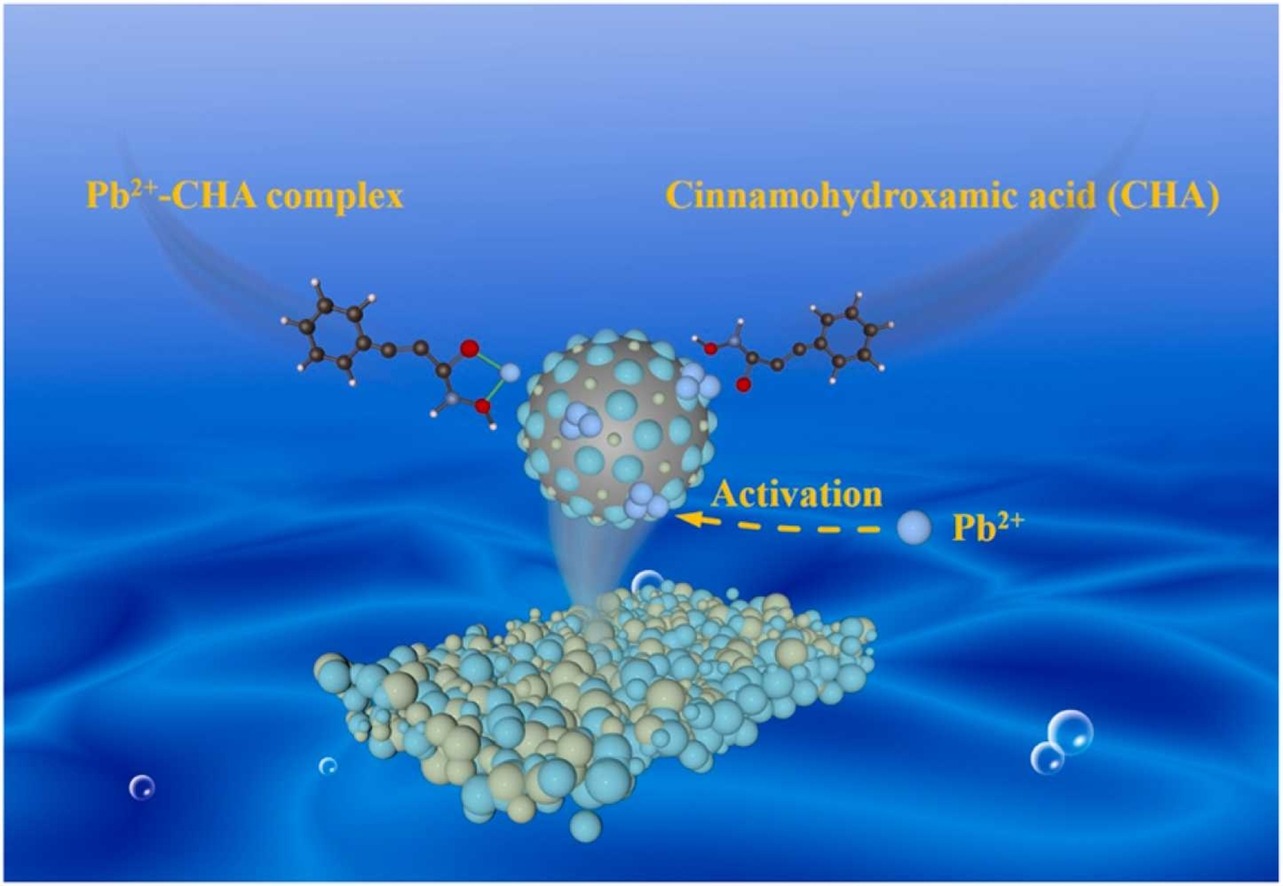Selective flotation separation of cassiterite and calcite through using cinnamohydroxamic acid as the collector and Pb2+ as the activator
发布时间:2023-03-29
点击次数:
影响因子:5.518
DOI码:10.1016/j.colsurfa.2023.131262
所属单位:中南大学
发表刊物:Colloids and Surfaces A: Physicochemical and Engineering Aspects
关键字:Cassiterite; Calcite; Flotation; Cinnamohydroxamic acid; Pb2+; Activation.
摘要:This study employs cinnamohydroxamic acid (CHA) as the collector in the flotation separation of cassiterite/calcite. Pb2+ ion is used as the activator to improve the collecting ability of CHA. This reagent system consisting of CHA collector and Pb2+ activator can achieve a higher recovery of cassiterite of ∼90% than that of calcite of ∼30%. A greater increase of 27.74% in C atomic concentration on the Pb2+-treated cassiterite surface than that of 15.21% on the Pb2+-treated calcite surface after the treatment with CHA indicates a higher adsorption amount of CHA on the Pb2+-treated cassiterite surface than that on the Pb2+-treated calcite surface, which results in its stronger ability to collect the Pb2+-activated cassiterite particles compared to the Pb2+-activated calcite particles. The treatment with CHA results in a smaller shift of ∼20 mV in the zeta potential of the Pb2+-treated cassiterite particles than that of ∼45 mV in the zeta potential of the Pb2+-treated calcite particles, which is in contradiction with the results of the X-ray photoelectron spectroscopic tests. A novel activation mechanism of Pb2+ ion for CHA flotation of cassiterite is proposed to account for this paradoxical observation. The formation of the Pb-CHA complexes is this activation mechanism of Pb2+ ion.
论文类型:期刊论文
通讯作者:田孟杰
学科门类:工学
一级学科:矿业工程
文献类型:J
卷号:666
是否译文:是
发表时间:2023-03-11
收录刊物:SCI
附件:
Selective-flotation-separation-of-cassiterite-and-calcite.pdf
上一条: Flotation separation of bastnaesite and fluorite using styrylphosphonic acid and cinnamohydroxamic acid as collectors
下一条: Interaction mechanism of 2-hydroxy-3-naphthyl hydroxamic acid and 1-hydroxy-2-naphthyl hydroxamic acid in the flotation separation of bastnaesite/fluorite: Experiments and first-principles calculations

